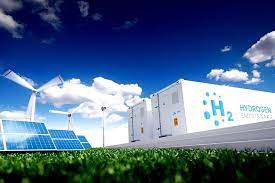
Tata Steel and ACME Group Join Forces For India’s Largest Green Hydrogen Project Worth Rs 27,000 Crore In Odisha: In a significant partnership, ACME Group, a prominent renewable energy company, has joined forces with Tata Steel Special Economic Zone Ltd. (TSSEZL) to establish an expansive green hydrogen and green ammonia project within Odisha’s Gopalpur Industrial Park. This project is on track to become India’s largest facility of its sort, a significant step towards sustainable energy production.
Daily Current Affairs Quiz: August 2023
| Short important question |
|---|
| Largest green hydrogen projects in the world ? NEOM Green Hydrogen Project, Saudi Arabia. Sinopec’s Ordos Green Hydrogen Project, China. FFI ad TES green hydrogen project, Germany. Plug Power Green Hydrogen Plants, Finland. Western Green Energy Hub (WGEH), Australia. |
India’s Largest Green Hydrogen Project Overview:
The project is set to be situated at the Gopalpur Industrial Park (GIP) in Odisha, strategically chosen for its logistical advantages and existing infrastructure. ACME Group has secured 343 acres of land within TSSEZL’s GIP to house the green hydrogen and derivatives unit, underlining their commitment to eco-friendly energy solutions. The estimated investment for the entire project amounts to Rs 27,000 crore, to be invested in progressive phases, reflecting the strategic approach to development.
Green Ammonia Production:
The project encompasses the establishment of a green ammonia production facility with a substantial capacity of nearly 1.3 MTPA (million tonnes per annum). Green hydrogen, created through the electrolysis process using renewable energy sources, will be used in the green ammonia facility. This facility’s location near the existing Gopalpur Port facilitates efficient export of the green ammonia to both western and eastern markets, leveraging the region’s connectivity.
Logistical Advantage and Infrastructure:
Gopalpur Industrial Park (GIP) stands out as an attractive investment destination due to its “plug-and-play” infrastructure, enabling seamless and swift establishment of projects. The utility corridor that connects GIP and Gopalpur Port ensures effective logistics and pipeline connectivity, hence improving the distribution process.
Environmental Significance:
Green hydrogen represents a pivotal advancement in the hydrogen industry. Unlike the conventional “grey” hydrogen production, it is generated through electrolysis using renewable energy sources. Traditional methods of manufacturing, such as steam methane reforming (SMR) from natural gas, emit considerable amounts of CO2, which contributes to climate change. Green hydrogen’s definition lies in its clean production process, involving water electrolysis powered by renewable energy sources like solar and wind.
Economic and Global Impact:
The collaborative effort seeks to deliver “Make in India” green hydrogen and green ammonia to both domestic and foreign markets, thereby fostering sustainable economic growth. By tapping into the potential of green hydrogen and its derivatives, the venture sets a positive precedent for India’s transition towards greener energy alternatives.





